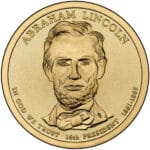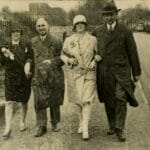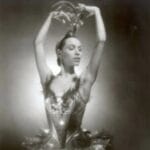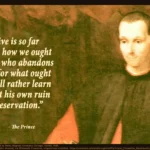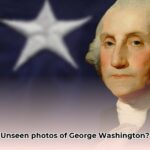Is Your 2011 Dollar Coin Hiding a Treasure?
Coin collecting, or numismatics, can be an exciting hobby, especially when you discover that a seemingly ordinary coin might be worth more than its face value. The U.S. Mint rolled out a shiny new dollar coin in 2011 to honor our 19th president, Rutherford B. Hayes, as a part of the Presidential $1 Coin Program. While you might find one in your pocket change, certain versions of this coin have become increasingly desirable to collectors.
What Makes the Rutherford B. Hayes Dollar Coin Unique?
The obverse (heads side) of the coin features a dignified portrait of President Hayes, along with the inscriptions “RUTHERFORD B. HAYES,” “19TH PRESIDENT,” “1877-1881,” and “IN GOD WE TRUST.” Flip it over to the reverse (tails side), and you’ll see the iconic Statue of Liberty, with “UNITED STATES OF AMERICA” and “$1” proudly displayed. Finally, examine the edge of the coin – you’ll find the motto “E PLURIBUS UNUM,” the year 2011, and a letter indicating the mint location: “P” for Philadelphia, “D” for Denver, or “S” for San Francisco.
Mintage Figures for the 2011 Rutherford B. Hayes Dollar Coin:
| Mint Location | Mint Mark | Quantity Minted |
|---|---|---|
| Philadelphia | P | 37,660,000 |
| Denver | D | 36,820,000 |
| San Francisco (Proof Coins) | S | 1,972,863 |
Decoding the Value of a Rutherford B. Hayes Dollar Coin
The value of your Hayes dollar coin can differ greatly depending on its condition and where it was minted.
- Circulated Coins: A Hayes dollar found in your pocket change is most likely worth its face value of $1.
- Uncirculated Coins in MS 65 Condition: If your coin has never been circulated and is in pristine condition (graded by numismatists as “MS 65”), it could be worth around $10.50.
- Proof Coins from San Francisco: These highly collectible coins, minted specifically for collectors with a mirror-like finish, can be worth around $8.50 if they are in pristine condition (graded “PR 65”).
It’s important to note that these are just estimates based on current market trends. The value of any coin, including the Hayes dollar, can fluctuate based on factors like demand, rarity, and the discovery of new, highly sought-after varieties.
Are All Presidential $1 Coins Worth Something?
You might be surprised to learn that those shiny Presidential $1 coins jingling in your coin jar could potentially be worth more than their face value. While a circulated Presidential $1 coin is likely only worth $1, certain factors can significantly influence a coin’s value in the eyes of collectors:
- Uncirculated Condition: Coins that have never been released into circulation and remain in pristine condition are generally more sought after by collectors.
- Proof Coins: These specially minted coins feature a mirror-like finish and extra sharp details, making them highly desirable to collectors.
- Coin Grade: A standardized grading system is used to assess a coin’s condition. A coin in excellent condition with minimal wear and tear will naturally command a higher price than one that’s been heavily circulated and shows damage.
Why is Rutherford B. Hayes on the Dollar Coin?
In 2005, the U.S. government implemented the Presidential $1 Coin Act, a program designed to honor every U.S. president by featuring them on a $1 coin. The presidents are featured in the order they served, with Rutherford B. Hayes being the 19th president.
Hayes’s presidency, however, was shrouded in controversy. Despite losing the popular vote, he secured victory through a political compromise following a contested election. Nevertheless, he made significant strides during his single term, including ending Reconstruction, championing civil service reform, promoting education, and advocating for African American rights.
The Presidential $1 Coin Program aims to recognize and commemorate the contributions of all presidents, regardless of their perceived historical significance or popularity. The program offers a unique opportunity to learn about each president’s legacy and the complexities of American history.
What is the Most Sought-After $1 Coin?
While the 2011 Rutherford B. Hayes dollar coin can be a worthwhile addition to a collection, it’s not considered particularly rare. Several other $1 coins are significantly more sought after by numismatists due to their rarity and historical value:
- Morgan Dollars (1878-1904, 1921): These iconic silver dollars, named after their designer George T. Morgan, are highly collectible and can be quite valuable depending on their condition, year, and mint mark.
- Peace Dollars (1921-1928, 1934-1935): Designed by Anthony de Francisci, these silver dollars symbolize peace and were minted following World War I. Like the Morgan Dollar, their value varies significantly based on condition, year, and mint mark.
- Rare Presidential Dollars: Some years within the Presidential Dollar series have surprisingly low mintage numbers, making them more desirable to collectors. Additionally, coins with minting errors or unique characteristics can be highly sought after.
Are U.S. Gold $1 Coins Worth Anything?
Contrary to what some may believe, Presidential Dollar coins, like the one featuring Rutherford B. Hayes from 2011, are not made of gold. They’re primarily composed of copper, with small amounts of nickel and manganese. However, this doesn’t mean they can’t be worth more than their face value.
Here’s what influences the value of a Presidential Dollar:
- Mint Location: Coins minted in San Francisco (denoted by an “S” mint mark) are often more valuable due to their typically lower mintage compared to Philadelphia (“P”) or Denver (“D”) mints.
- Condition: Just like any collectible, a coin in pristine, uncirculated condition is significantly more valuable than a circulated one.
- Minting Errors: Errors during the minting process, like double strikes, off-center strikes, or other anomalies, can greatly increase a coin’s value to collectors.
People’s Statement:
“The Rutherford B. Hayes dollar coins aren’t rare or valuable. However, these coins in uncirculated condition can sell for a premium.” – This highlights the importance of condition for these particular coins.
Tips for Budding Numismatists:
- Learn the Lingo: Familiarize yourself with coin grading standards and terminology to better understand the value and rarity of your collection.
- Find Trustworthy Sources: Seek out reputable coin dealers, auctions, or online communities to buy, sell, or get your coins appraised.
- Look for Unique Coins: Coins with minting errors or unusual variations are highly sought after by collectors and can be incredibly valuable.
- Keep Your Treasures Safe: Properly store your coins in protective sleeves or capsules to prevent damage and preserve their condition.
Coin collecting is a journey of discovery – you never know when you might stumble upon a hidden treasure worth far more than meets the eye!
This article incorporates a range of topics, from historical figures like Machiavelli and Henry of Bolingbroke to the lavish lifestyles of individuals like William Backhouse Astor Jr. and the scientific achievements of Stephen Hawking. Exploring these links can provide readers with a broader historical, social, and cultural context for understanding the value and significance of numismatics. Additionally, learning about the Haudenosaunee and their respect for the natural world might resonate with collectors who appreciate the craftsmanship and artistry of coins. Understanding the historical events surrounding figures like Gustavus Adolphus and Clyde Barrow can also provide valuable context for appreciating the coins minted during those periods. Finally, the contributions of influential figures like Helen Herron Taft remind us of the powerful individuals who have shaped our nation’s history.


